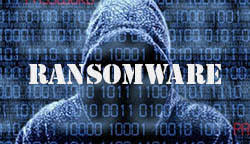Disguised Ransomware expected to Ramp Up Attacks and become Most Prevalent Malware of 2017
 Ransomware has taken the computer world by storm with emerging threats that have evolved to the point that they are making crafty hackers millions of dollars every year. In the full scheme of what ransomware is comprised of, computer security researchers and experts have warned computer users of attacks that encrypt files for the purpose of demanding a ransom fee to restore those encrypted files supposedly.
Ransomware has taken the computer world by storm with emerging threats that have evolved to the point that they are making crafty hackers millions of dollars every year. In the full scheme of what ransomware is comprised of, computer security researchers and experts have warned computer users of attacks that encrypt files for the purpose of demanding a ransom fee to restore those encrypted files supposedly.
In the recent months, there have been ransomware attacks on an unprecedented scale that has indicated to experts and researchers that such threats are here to stay and potentially grow exponentially through 2017 taking on a new disguise. In a new report examining cybersecurity trends during the last quarter of 2017, ransomware was the most notable type of malware to set future trends. In fact, all other forms of malware revealed in the Kaspersky Labs' quarterly threat intelligence trends report for 2017 Q2, paled in comparison to recent ransomware threats.
At one time, even during the beginning of 2017, ransomware authors were sharply focused on monetary gain. Being that ransomware authors and hackers who wield ransomware around like a toddler with a permanent marker have made their money in the past, it appears they are looking toward disruption aimed at large corporations and infrastructures. The Kaspersky trends report reveals several patterns of destructive malware that have now disguised itself as ransomware to be more on the side of uprooting the security of large infrastructures instead of making clear monetary demands.
The money trail of ransomware has been vast, accounting for millions upon millions of dollars taken from victimized computer users all over the world. One could even suspect the ransomware authors are becoming bored due to how effective their tactics are when seeking money from someone who's PC has just been locked down and are willing to pay $100 or so in Bitcoins to get their system back to normal operation. It was all a grand scheme in the eyes of hackers that ultimately panned out well for them, financially.
If the ransomware threats of 2017 are any indication of a new trend, it is one that demonstrates ransomware authors are taking on a new hobby to spread even more threats and take on the goliaths that we know to be major corporations and large computer and server infrastructures. However, don't be fooled, there is always a monetary angle in just about every type of attack, whether it be the recent Petya/NotPetya Ransomware that was believed to be behind the Ukraine power grid issue, or WannaCry Ransomware that had a rapid global spread to scour data.
The attackers behind a new age of ransomware are poised and suspected to be ramping up for additional attacks where 2017 is alleged to be the busiest year yet for such malicious activity. Moreover, the threat actors are from all over the globe, further signifying the potential proliferation of ransomware, even if it takes on a new face altogether. You can think of the new-age ransomware as being a wolf in wolf's clothing, only a slightly different shade.
The threat actors have so far been found to speak many different languages rooting from places like Korea, the Middle East, China, the USA, and many other densely populated regions of the world. Additionally, one would conclude that the increasing tensions with North Korea could have a major play in the next round of ransomware or pseudo ransomware attacks aimed at either side's enemy. Either way, pseudo-type ransomware is suspected to emerge to be the most prevalent type of malware around for 2017. You've been warned!
Leave a Reply
Please note that we are not able to assist with billing and support issues regarding SpyHunter or other products. If you're having issues with SpyHunter, please get in touch with SpyHunter customer support through your SpyHunter . If you have SpyHunter billing questions, we recommend you check the Billing FAQ. For general suggestions or feedback, contact us.